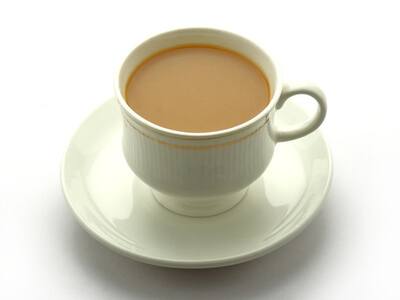Tea as the 21st Century English Cool
For more than two centuries the United Kingdom has been one of the largest tea consuming nations in the world. The average Brit drinks 1.9 kilograms of tea every year and British residents consider tea to be an important feature of British society and culture and an important element of one’s British identity.
In the last few decades tea consumption in the UK has fallen. Now, tea manufacturers are looking to connect with the young generation by linking a “cuppa” with the new trends in Slotocash online casino gaming and other popular activities via young “influencers”.
History of Tea
The Chinese were drinking tea thousands of years before the brew made its way to Europe. Tea was often used as an herbal treatment in China as well as a soothing hot beverage. Tea made its way to Japan via Buddhist monks where it became an important part of Japanese culture where ceremonies and other religious events came to be associated with it. Tea was introduced to Europe only in the 16h century. After trading routes were established between China and Holland tea became better-known to Europeans though its high price made it a drink for the wealthy.
Sailors from the British East India Company brought tea home as gifts. After the marriage of Charles II to the Portuguese princess Catherine of Braganza, a noted tea aficionado, tea became a standard at the royal court and was quickly adopted by the aristocracy and then spread to other social classes.
By the 20th century people in the UK were drinking massive amounts of tea on a regular basis. Most British tea is black tea which is generally served with milk and, sometimes, sugar. The four o’clock afternoon tea is still a standard feature of the afternoon in a British family.
Tea Today
Tea manufacturers are looking to the new generation to re-energize the tea industry. Marketers are focusing on the 16-35 year age group to act as influencers and revitalize interest in tea in the UK and in other areas of the world.
The last National Food Survey, which closed in 2000, showed how team consumption is falling from one decade to the next. One of the biggest blows to British morale during WWII was the rationing of tea when citizens were allocated 56 grams per person per week. Now, Brits drink, on an average, of 25 grams of tea every week, less than half of what they were drinking 80 years ago.
The decline in interest in tea among younger people can be attributed to a number of reasons – the glamour of the different coffees, changing tastes and the reduction in quality of the tea being sold. Tea is viewed differently than it once was – consumers see it as being homely, comfortable and ordinary – in one word, boring. Having a cup of tea to sooth one’s thirst isn’t taken for granted any more in England and tea’s share of the hot drinks market has declined.
Tea manufacturers are reaching out to young people through initiatives such as gourmet boutique tea shop. To remind Brits that tea can be an aspirational experience, as opposed to a mug and a teabag, marketers are focusing on making drinking tea an “experience” in the same way that the coffee industry drew in hipsters and other millenials through Starbucks and other coffee shops.
Health
There’s another way to market tea and that it by promoting its health benefits. The most well-known types of tea, black tea, green tea and oolong tea are brewed from the leaves of the Camellia sinensis plant. There are additional types of teas that tea manufacturers are starting to promote in order to build up interest in tea-drinking. They include teas made from spices, herbs, dried fruits and flowers. With the wide range in tastes and flavors as well as the health benefits, herbal teas are an important component in revitalizing the tea industry.
Some of the teas with proven health benefits include:
Chamomile Tea
Chamomile tea is known as a calming aid. It’s often recommended for people who are having trouble falling asleep. Studies have reinforced this, showing that people who drink chamomile tea experience fewer symptoms of depression and, for those who report sleep issues, improve the quality of their sleep. Chamomile has also been shown to have anti-inflammatory and anti-bacterial properties, fight stomach ulcers, ease diarrhea reduce symptoms of premenstrual syndrome and improve insulin, blood lipid and blood glucose levels.
Peppermint Tea
Peppermint tea is a popular tea which is enjoyed around the world. It’s been shown to act as an antioxidant, support digestive tract health and have antiviral and antibacterial properties. Many people use it to calm upset stomachs. The oil from the peppermint plant can help to relieve stomach pain, nausea and indigestion.
Ginger Tea
Herbalists have long recognized the health benefits of ginger tea including acting as an antioxidant, reducing inflammation, relieving nausea, stimulating the immune system, preventing stomach ulcers and relieving constipation and indigestion.
Hibiscus Tea
Tea made from the flowers of the hibiscus plant is a recognized antiviral and has a positive effect on high blood pressure.
Echinacea Tea
Echinnacia tea, made from echinnacia flowers, is said to boost the immune system which then helps the body fight off infections and viruses. Some studies have shown that echinnacia, if drunk at the onset of a cold, reduces its duration, though other studies dispute this. Many people, however, swear that they experience significant lessening of cold symptoms when they drink Echinacea tea when they get a cold.






